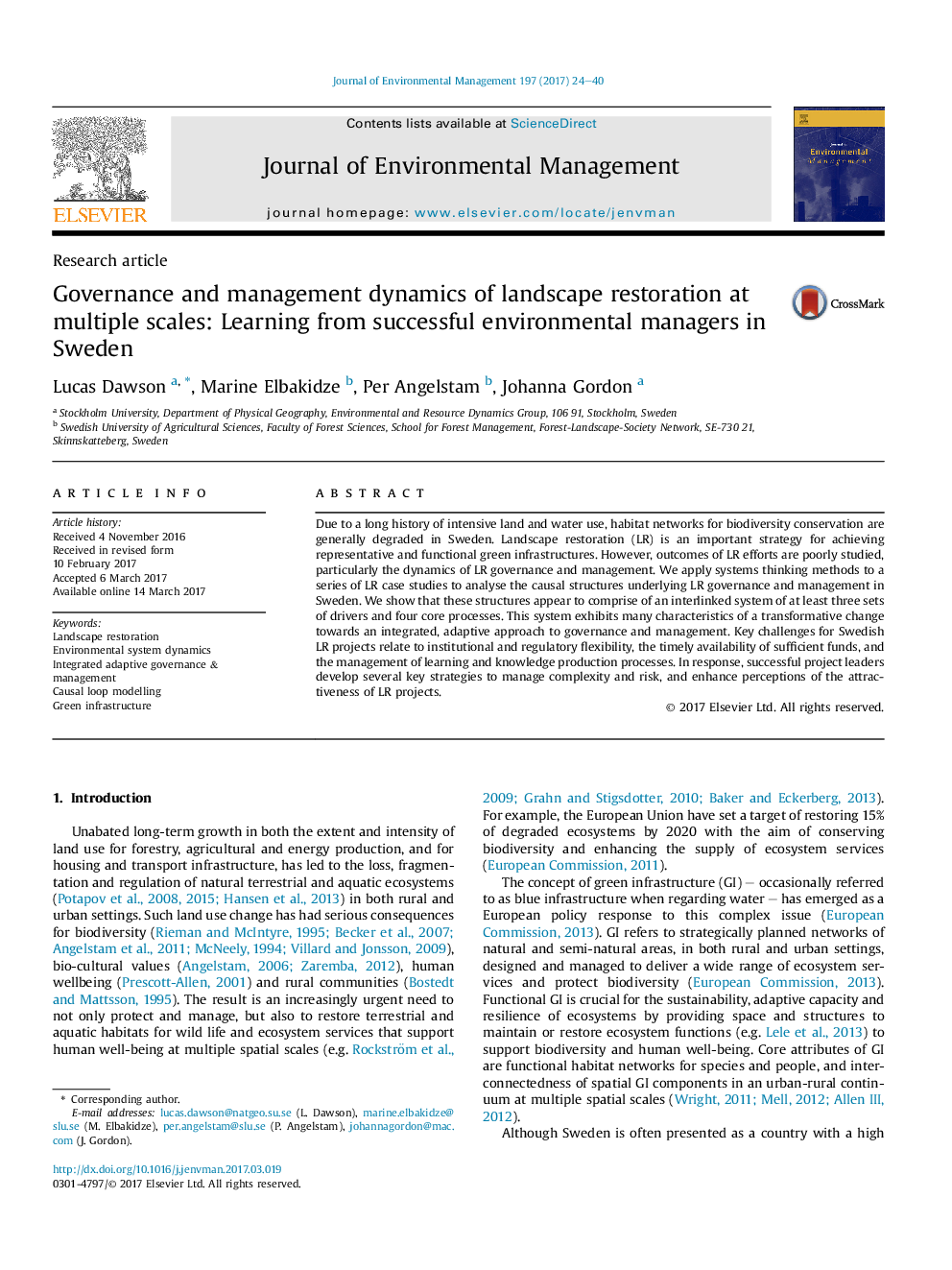| Article ID | Journal | Published Year | Pages | File Type |
|---|---|---|---|---|
| 5116929 | Journal of Environmental Management | 2017 | 17 Pages |
â¢Many current institutional and regulatory frameworks limit the development of landscape restoration (LR) projects.â¢Successful LR projects are often a reaction to uncontrollable, exogenous events, which create windows of opportunity.â¢Successful LR projects lead to multi-loop learning, although 3rd-loop learning remains relatively weak and slow.â¢Reducing the dimensionality of complex LR projects has generally favourable direct and indirect impacts on core processes.â¢A clear focus on social benefits and public utility is important to generate support.
Due to a long history of intensive land and water use, habitat networks for biodiversity conservation are generally degraded in Sweden. Landscape restoration (LR) is an important strategy for achieving representative and functional green infrastructures. However, outcomes of LR efforts are poorly studied, particularly the dynamics of LR governance and management. We apply systems thinking methods to a series of LR case studies to analyse the causal structures underlying LR governance and management in Sweden. We show that these structures appear to comprise of an interlinked system of at least three sets of drivers and four core processes. This system exhibits many characteristics of a transformative change towards an integrated, adaptive approach to governance and management. Key challenges for Swedish LR projects relate to institutional and regulatory flexibility, the timely availability of sufficient funds, and the management of learning and knowledge production processes. In response, successful project leaders develop several key strategies to manage complexity and risk, and enhance perceptions of the attractiveness of LR projects.
